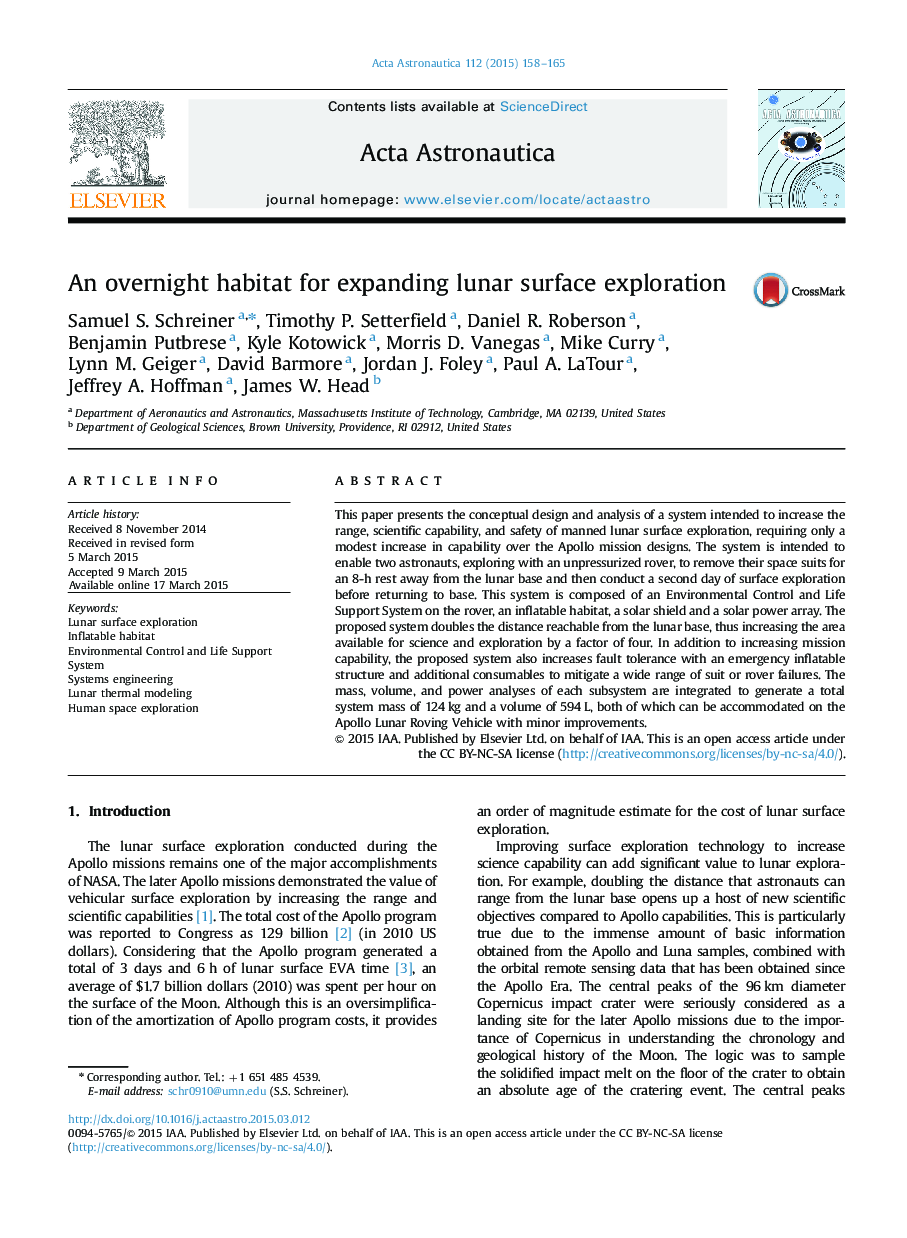| Article ID | Journal | Published Year | Pages | File Type |
|---|---|---|---|---|
| 8056613 | Acta Astronautica | 2015 | 13 Pages |
Abstract
This paper presents the conceptual design and analysis of a system intended to increase the range, scientific capability, and safety of manned lunar surface exploration, requiring only a modest increase in capability over the Apollo mission designs. The system is intended to enable two astronauts, exploring with an unpressurized rover, to remove their space suits for an 8-h rest away from the lunar base and then conduct a second day of surface exploration before returning to base. This system is composed of an Environmental Control and Life Support System on the rover, an inflatable habitat, a solar shield and a solar power array. The proposed system doubles the distance reachable from the lunar base, thus increasing the area available for science and exploration by a factor of four. In addition to increasing mission capability, the proposed system also increases fault tolerance with an emergency inflatable structure and additional consumables to mitigate a wide range of suit or rover failures. The mass, volume, and power analyses of each subsystem are integrated to generate a total system mass of 124Â kg and a volume of 594Â L, both of which can be accommodated on the Apollo Lunar Roving Vehicle with minor improvements.
Related Topics
Physical Sciences and Engineering
Engineering
Aerospace Engineering
Authors
Samuel S. Schreiner, Timothy P. Setterfield, Daniel R. Roberson, Benjamin Putbrese, Kyle Kotowick, Morris D. Vanegas, Mike Curry, Lynn M. Geiger, David Barmore, Jordan J. Foley, Paul A. LaTour, Jeffrey A. Hoffman, James W. Head,
